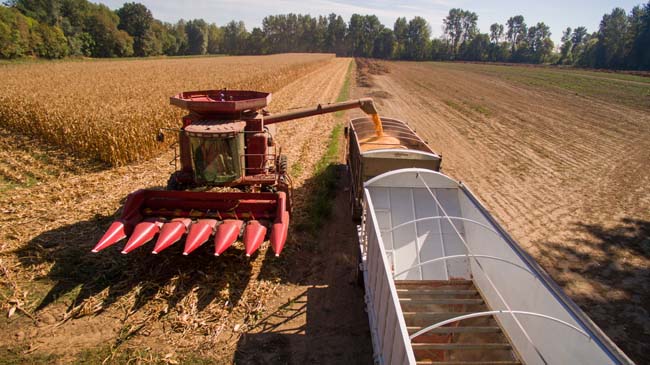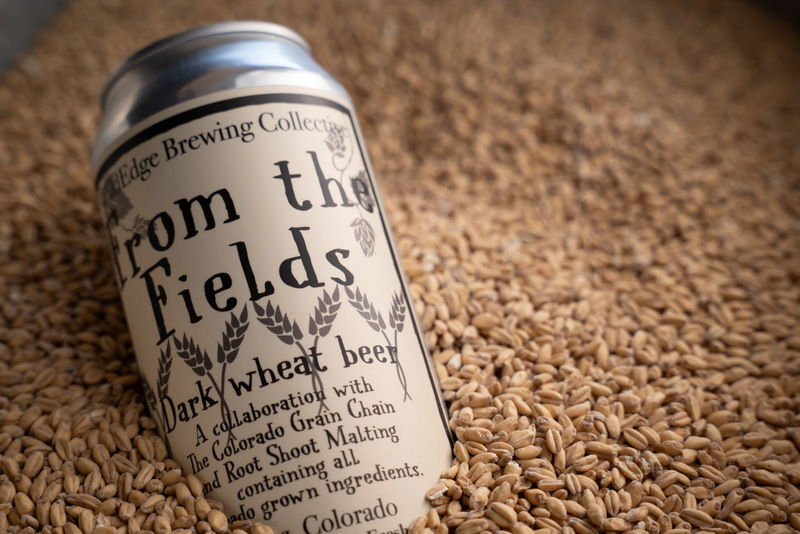
Isn’t it amazing that our beloved brews truly consist of four basic ingredients? You, craft brewer, are building a business with a foundation of water, grain, hops and yeast. Of course, we all know that more goes into beer than that these days. Pumpkin, peach, doughnuts, moon dust — you crafty concoctors of fine libations leave no spice untested, no fruit unbrewed. It is to you that we lift our glasses, to toast 2015, the year that was, and highlight the best brewing ingredient-focused stories of the year. So dive on in and you might just find your inspiration for your next crazy brewing experiment – and we can’t wait to try it.
The business of hops: Craft professionals share advice from farming to contracting
Today, American craft brewing pioneers have taken up the torch for innovative hop usage. A forward-hops taste (and the IPA category of beer) is almost a hallmark of U.S. craft beers, but how exactly do brewhouses produce those unique hoppy flavors? How do they get the hops to make that amazing beer, and what are the latest techniques and innovations changing the hop and beer industry? We decided to ask the experts, and below they shared their insights on everything from flexible contracts to hydroponic farming.
Craft professionals share their homebrewing secrets
We reached out to a few of our favorite brewing professionals around the country to get their advice on the ultimate treat — homebrewed beer. From California to Delaware, craft breweries from Dogfish Head to Founders and beer professionals from Homebrew Supply to Oregon Fruit Products responded with excellent insights for homebrewers everywhere. As homebrewers advance in the hobby, they eventually start to experiment with creating their own recipes. Creativity and customizing beer to one’s personal tastes is really what this hobby is all about, and that is a beautiful thing. A very important lesson in creating new recipes is that complexity of character does not require a complex list of ingredients.
As we made our way through the year, the fine folks at Rogue Farms kept us up to date with the comings and goings of crops. The Crop Reports were filled with agricultural expertise, providing a behind-the-scenes look at how Rogue cultivates its craft beer ingredients. Check out this quick outtake from the Autumn 2015 report and then click the link below to go to the Crop Report archive:
As we wrapped up the harvest season at Rogue Farms, the last of the crops to come in from the field just happen to be the ones that taught us our most valuable lessons of the year. Lessons such as: Don’t plant your corn before it’s picked, never turn your back on a jalapeño pepper, and you can learn a lot about growing marionberries by growing hops. Sometimes the lessons sting. Sometimes they’re humbling. But either way, they motivate us to try again, try harder and improve. In this edition of the Rogue Farms Crop Report we’ll show you some of these lessons and what we did to get better.
Click here for the Rogue Farms Crop Report archive.
Temperature, pH impact on enzymes
Throughout the brewing process, enzymes are vital to a consistently good tasting beer. Like wine, beer is produced by yeast fermentation, based on reducing sugars or sugars that are able to be fermented. Unlike wine, beer does not naturally contain the sugars necessary for fermentation and instead relies on enzymes from the malted grains to break down starch to fermentable sugars. Enzymes, while playing different roles throughout the brewing process, are particularly important during the stages of mashing and fermentation. In relation to enzyme activity, pH and temperature are important factors to monitor during these stages. Both pH and temperature have a direct effect on the efficiency of enzyme activity.
The effects water can have on your brew
As brewers, we measure out our ingredients, time our boils and add hops at precisely the right time in order to ensure a successful, quality finished beer. However, we often overlook the importance of the most abundant ingredient in beer — water! If the water used tastes good, we generally assume the beer will also taste good. While this may be true sometimes, the composition of your water may substantially change the taste of your final beer, for better or for worse. As we gain more brewing experience, we learn that water chemistry plays an integral role in our final brew. After deciding the style of beer to brew, we can determine if our water is going to give us the desired product.
Treat coffee beans like hops: An innovative approach from Wolf’s Ridge Brewing
Clear Sky Daybreak, the coffee-infused cream ale, was originally intended as a one-off batch, but is now a local staple. This madness started when Wolf’s Ridge began working closely with a local Columbus coffee shop in order to start approaching the coffee bean’s aromatic and flavor complexities as you might those of a hop. By combining the right styles with the right roasts, Wolf’s Ridge now has a slew of coffee beers from cream ales to stouts to hefeweizens that are interesting and innovative. We had a chat with head brewer Chris Davison to learn more about his approach and to perhaps glean some best practices other brewers could replicate in their own journeys into the outer edges of craft beer experimentation.
10 safety tips for using brewing cleaning chemicals
Caustic burns on the skin. Splashing in the eyes. We hate to say it, but these accidents do occur in the craft brewing industry. Most — if not all — are preventable. A brewhouse presents many employee safety issues, and with OSHA paying unexpected visits around the country, now is a great time to push brewery safety to the forefront. Here is a look at some best practices that breweries may be able to implement to stay ahead of the game.
The trial and error of a sour beer program, by Epic Brewing
Our sour program has, literally, been in the works since we founded the brewery in 2010, with the vision of brewing truly sour beers made with real fruit. That vision got a major jump start shortly after we opened our Denver Brewery in August 2013 with the purchase of three 60 hectoliter Oak Foeders from New Belgium Brewing. These wonderful wooden vessels will forever be seen as a very special gift from our friends in Fort Collins. Some fans of Epic may recall when a beautiful disaster struck in 2014 and our Brainless on Peaches casks were contaminated with a peculiar wild yeast that left them sour but with a complex peach flavor that worked very well with the Belgian characteristics of the big 9-percent ABV base beer of Brainless Golden Ale. This “Wild” Brainless on Peaches was not the sour beer we always intended; it was much stronger than we had dreamed of, and certainly wild with some sharp edges. Nonetheless, it was a beautiful disaster— a gift from nature and something we hoped to capture beyond a solitary batch of chance. This time we did it on purpose.
A thirst for flavored beer: A taste of brewing trends and flavoring tips
Craft brewing is flourishing, with a forecast to grow in value from $12 billion in 2012 to $18 billion by 2017. As part of this global phenomenon, people are increasingly passionate about flavored beer. Beer lovers across the world relish the prospect of complex aromas and enjoy sampling new flavor combinations. The market now boasts an ever-expanding portfolio of craft beers, including honey and berry varieties, as well as vegetable and savory-based assortments. Brewers must innovate in line with market demand for something unique and reinvent taste profiles to match consumer preference in various regions.
Great stories stand the test of time. If you’re hungry for even more excellent brewing business content, check out our Best Of archives for 2014 and 2013.





We’re honored that our Rogue Farms Crop Reports made the “Best of CBB 2015” list from @CraftBrewingBiz! https://t.co/bLYTH8hWzB #GYO #DIY
Best of CBB 2015: Inside the ingredients that bolster your beers https://t.co/Q8v59jr87h 来自 @craftbrewingbiz
Serge Lubomudrov liked this on Facebook.
Johnnie Brew liked this on Facebook.
Joe Rinehart liked this on Facebook.
Best of CBB 2015: Inside the ingredients that bolster your beers https://t.co/NZSbh50sUH via @craftbrewingbiz
Todd Parker liked this on Facebook.
Matt Fisher liked this on Facebook.
#CraftBeer #CraftBrewing #Beer #BeerBiz Best of CBB 2015: Inside the ingredients that bolster your beers https://t.co/Yzac6rWlR9
RT @CraftBrewingBiz: Best of CBB 2015: Inside ingredients that bolster your beers: https://t.co/BvThlehSQo